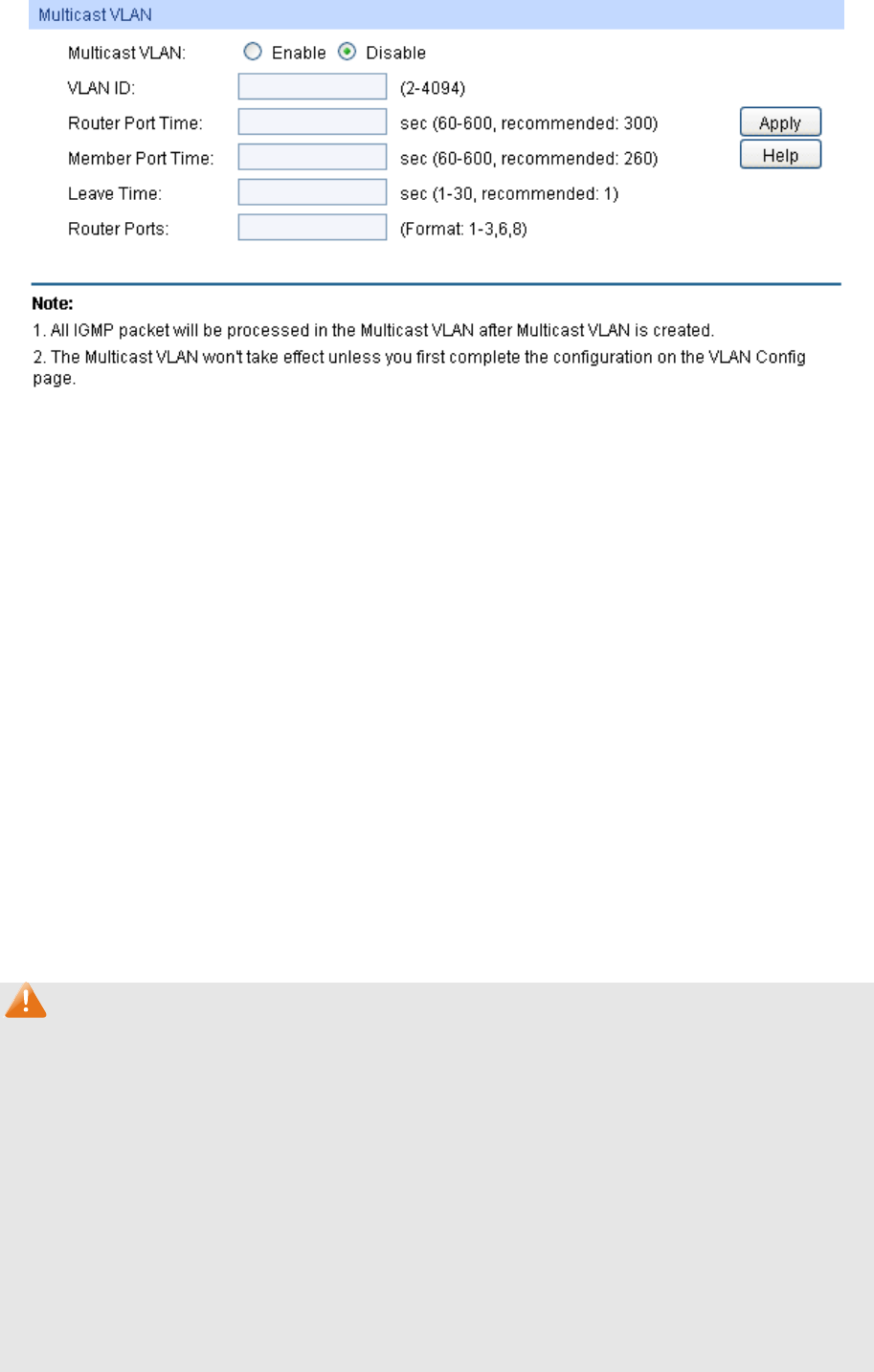
Figure 8-7 Multicast VLAN
The following entries are displayed on this screen:
Multicast VLAN
Multicast VLAN: Select Enable/Disable Multicast VLAN feature.
VLAN ID: Enter the VLAN ID of the multicast VLAN.
Router Port Time: Specify the aging time of the router port. Within this time, if the
switch doesn’t receive IGMP query message from the router port,
it will consider this port is not a router port any more.
Member Port Time: Specify the aging time of the member port. Within this time, if the
switch doesn’t receive IGMP report message from the member
port, it will consider this port is not a member port any more.
Leave Time: Specify the interval between the switch receiving a leave message
from a host, and the switch removing the host from the multicast
groups.
Router Ports: Enter the static router ports which are mainly used in the network
with stable topology.
Note:
1. The router port should be in the multicast VLAN, otherwise the member ports can not receive
multicast streams.
2. The Multicast VLAN won't take effect unless you first complete the configuration for the
corresponding VLAN owning the port on the 802.1Q VLAN page.
3. It is recommended to choose GENERAL as the link type of the member ports in the multicast
VLAN.
4. Configure the link type of the router port in the multicast VLAN as TRUNK or configure the
egress rule as TAG and the link type as GENERAL otherwise all the member ports in the
multicast VLAN can not receive multicast streams.
5. After a multicast VLAN is created, all the IGMP packets will be processed only within the
multicast VLAN.
101


















